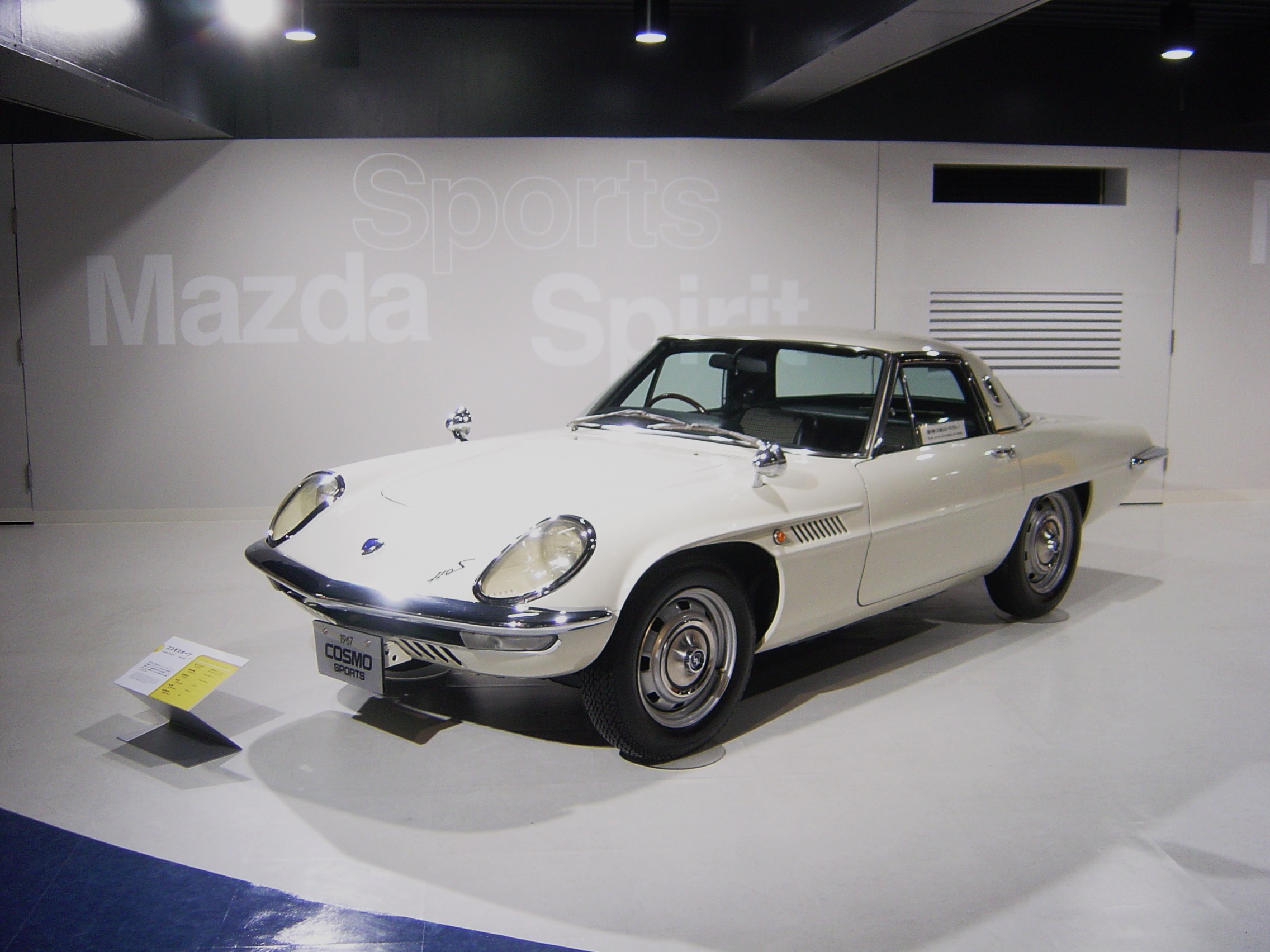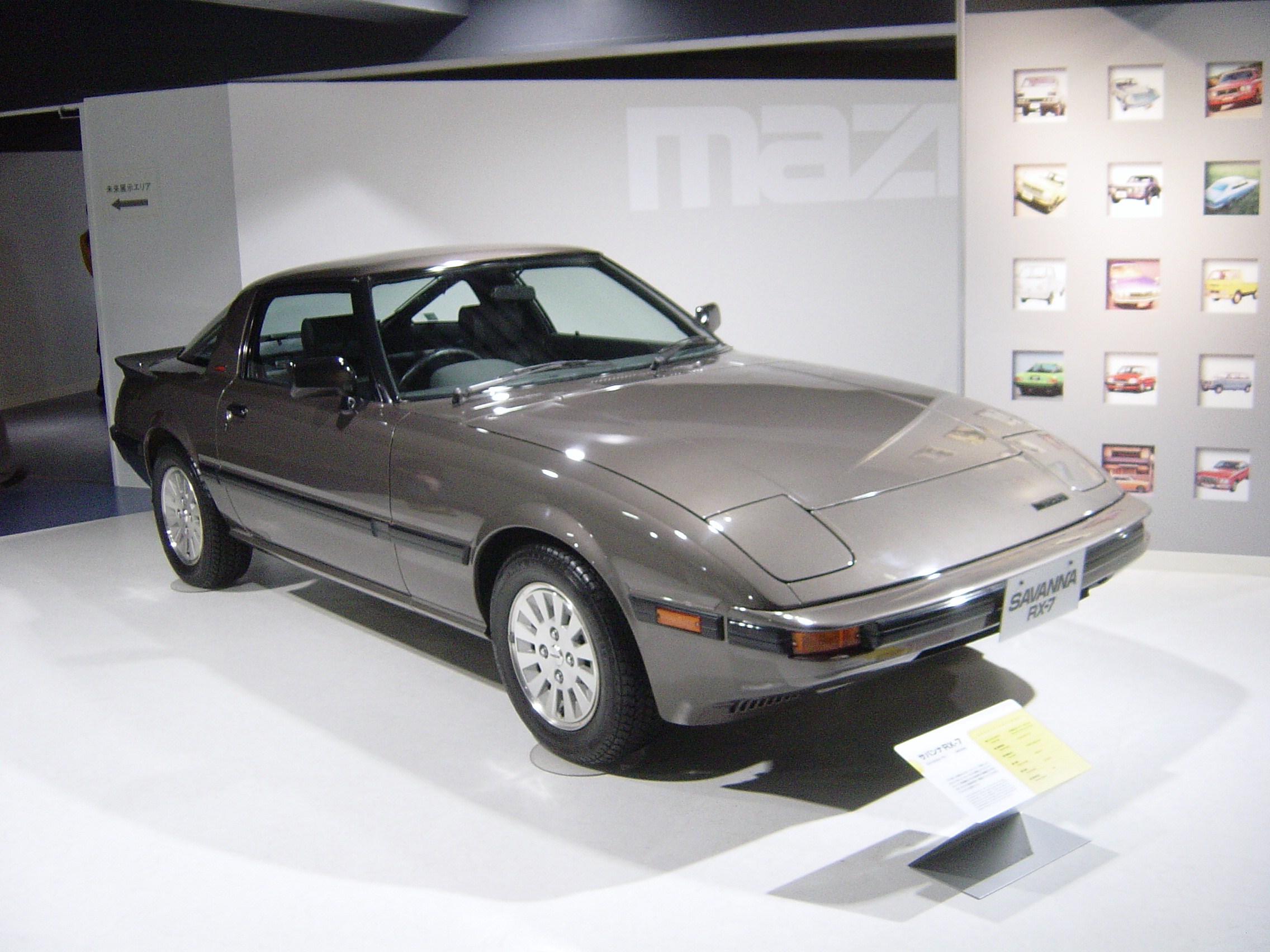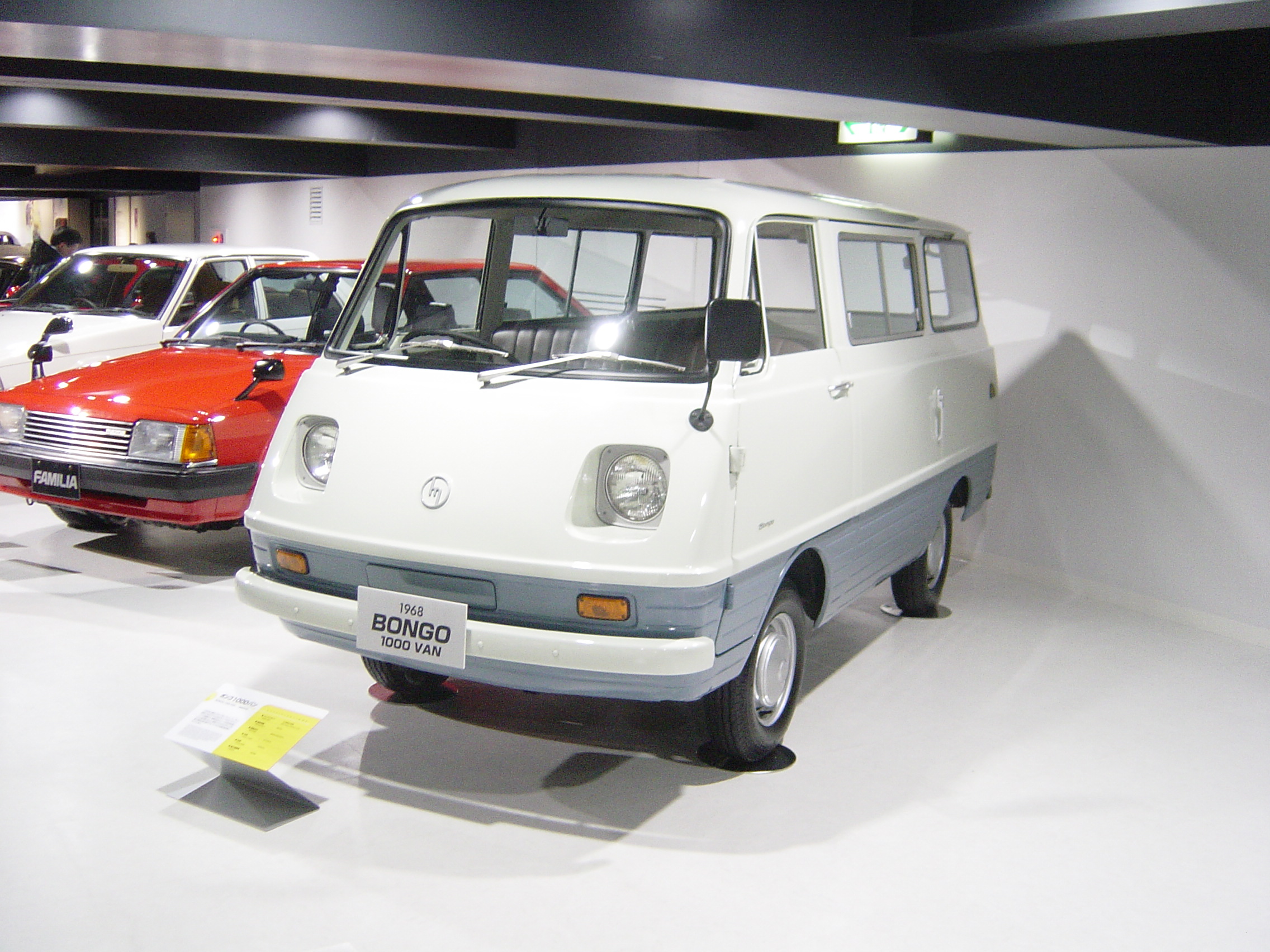|
Mazda JF Engine
The Mazda J-family are a range of 60-degree V6 engines featuring a cast-iron cylinder block and alloy heads with belt-driven DOHC or SOHC. It is Mazda's only cast-iron gasoline V6. These engines are found in the Mazda H platform-based Mazda 929, Efini MS-9, and Mazda Luce; as well as the L platform Mazda MPV and S platform Mazda Bongo. It was built at the Miyoshi Plant in Miyoshi, Hiroshima, Japan. JF * 2.0 L JF - SOHC 12-valve longitudinally mounted V6. Applications: * 1986-1989 Mazda 929 * 1986-1989 Mazda Luce (Japan) JFT * 2.0 L JFT - a turbocharged variant of the JF engine. JE The JE is a SOHC 18 valve V6 used in the 1989-1998 Mazda MPV and 1988-1991 Mazda 929, and produced and of torque. A JE-ZE DOHC variant was in the 1990-1995 Mazda 929 ''S'', producing . Applications: * 1989-1998 Mazda MPV * 1986-1989 Mazda 929 * 1986-1989 Mazda Luce (Japan) * 1990-1994 Mazda 929 * 1991-1993 Efini MS-9 * 1992-1997 Kia Potentia (South Korea) J5 The 2.5 L ... [...More Info...] [...Related Items...] OR: [Wikipedia] [Google] [Baidu] |
Mazda
is a Japanese Multinational corporation, multinational automotive manufacturer headquartered in Fuchū, Hiroshima (town), Fuchū, Hiroshima Prefecture, Hiroshima, Japan. The company was founded on January 30, 1920, as Toyo Cork Kogyo Co., Ltd., a cork-making factory, by Jujiro Matsuda. The company then acquired Abemaki Tree Cork Company. It changed its name to Toyo Kogyo Co., Ltd. in 1927 and started producing vehicles in 1931. Mazda is known for its innovative technologies, such as the Wankel engine, the SkyActiv platform, and the Kodo Design language. It also has a long history of motorsport involvement, winning the 24 Hours of Le Mans in 1991 with the rotary-powered Mazda 787B. In the past and present, Mazda has been engaged in alliances with other automakers. From 1974 until the late 2000s, Ford Motor Company, Ford was a major shareholder of Mazda. Other partnerships include Toyota, Nissan, Isuzu, Suzuki and Kia. In 2023, it produced 1.1 million vehicles globally. The ... [...More Info...] [...Related Items...] OR: [Wikipedia] [Google] [Baidu] |
Mazda S Platform
This list of Mazda model codes describes following model codes which have been used by Mazda since the 1980s. Naming scheme The company's model codes form the fourth and fifth characters of the VIN on post-1981 vehicles. The first character is a letter representing the model family, while the second is a sequential letter for subsequent models. For example, the Mazda N family used by the Mazda Miata started at NA and was updated in 1998 to NB and in 2006 to NC. The 2016 and newer MX-5s are designated ND. Mazda generally starts car model codes at the letter "A", but van and truck variants often get different names, usually starting at "V". Note: The US-built Mazda6 and Tribute do not use the Mazda model code in the VIN; in its place is an AutoAlliance code. Instead of the model code letter, position four in the VIN specifies the vehicle's safety systems, and position five specifies the marque, due to being built in a multi-brand facility. Old VINs Prior to 1981, Mazda used a di ... [...More Info...] [...Related Items...] OR: [Wikipedia] [Google] [Baidu] |
Mazda Engines
is a Japanese multinational automotive manufacturer headquartered in Fuchū, Hiroshima, Japan. The company was founded on January 30, 1920, as Toyo Cork Kogyo Co., Ltd., a cork-making factory, by Jujiro Matsuda. The company then acquired Abemaki Tree Cork Company. It changed its name to Toyo Kogyo Co., Ltd. in 1927 and started producing vehicles in 1931. Mazda is known for its innovative technologies, such as the Wankel engine, the SkyActiv platform, and the Kodo Design language. It also has a long history of motorsport involvement, winning the 24 Hours of Le Mans in 1991 with the rotary-powered Mazda 787B. In the past and present, Mazda has been engaged in alliances with other automakers. From 1974 until the late 2000s, Ford was a major shareholder of Mazda. Other partnerships include Toyota, Nissan, Isuzu, Suzuki and Kia. In 2023, it produced 1.1 million vehicles globally. The name Mazda was derived from Ahura Mazda, the god of harmony, intelligence and wisdom in Z ... [...More Info...] [...Related Items...] OR: [Wikipedia] [Google] [Baidu] |
Kia Potentia
The is an executive car that was produced by Mazda in Japan from 1966 until 1991. It was widely exported as the Mazda 929 from 1973 to 1991 as Mazda's largest sedan. Later generations were installed with luxury items and interiors as the Luce became the flagship offering. The Luce was replaced by the Sentia in 1991 which was also exported under the 929 nameplate. __TOC__ Etymology The name ''" lu'ce"'' was taken from the Italian word for "light". SU/SV series (1966–1973) Following an agreement signed with Bertone in April 1962, the 1965 Luce 1500 show car was designed by Giorgetto Giugiaro of Italy. It was low and sharp, looking more like a contemporary BMW Bavaria than its smaller Mazda companion models, the Familia and the ''kei car'' Carol. The production version (SUA), started production in July 1966 and launched in August, had a higher roofline but retained the BMW-esque look. It was a front-engine, rear-wheel-drive four-door sedan, and featured a square 1 ... [...More Info...] [...Related Items...] OR: [Wikipedia] [Google] [Baidu] |
Turbocharged
In an internal combustion engine, a turbocharger (also known as a turbo or a turbosupercharger) is a forced induction device that is powered by the flow of exhaust gases. It uses this energy to compress the intake air, forcing more air into the engine in order to produce more power for a given engine displacement, displacement. Turbochargers are distinguished from superchargers in that a turbocharger is powered by the kinetic energy of the exhaust gases, whereas a supercharger is mechanically powered (usually by a belt from the engine's crankshaft). However, up until the mid-20th century, a turbocharger was called a "turbosupercharger" and was considered a type of supercharger. History Prior to the invention of the turbocharger, forced induction was only possible using mechanically-powered superchargers ...[...More Info...] [...Related Items...] OR: [Wikipedia] [Google] [Baidu] |
Longitudinal Engine
In automotive engineering, a longitudinal engine is an internal combustion engine in which the crankshaft is oriented along the long axis of the vehicle, from front to back. See also: transverse engine Use This type of motor is usually used for rear-wheel drive cars, except for some Audi, SAAB, the Oldsmobile Toronado, and the 1967 Cadillac Eldorado equipped with longitudinal engines in front wheel drive. In front-wheel drive cars a transverse engine is usually used. Trucks often have longitudinal engines with rear-wheel drive. For motorcycles, the use of a particular type depends on the drive: in the case of a chain or belt drive a transverse engine is usually used, and with shaft drives a longitudinal engine. Longitudinal engines in motorcycles do have one disadvantage: the "tipping point" of the crankshaft tilts along the entire motorcycle to a greater or lesser degree when accelerating. This is partly resolved by having other components, such as the generator and the ge ... [...More Info...] [...Related Items...] OR: [Wikipedia] [Google] [Baidu] |
Japan
Japan is an island country in East Asia. Located in the Pacific Ocean off the northeast coast of the Asia, Asian mainland, it is bordered on the west by the Sea of Japan and extends from the Sea of Okhotsk in the north to the East China Sea in the south. The Japanese archipelago consists of four major islands—Hokkaido, Honshu, Shikoku, and Kyushu—and List of islands of Japan, thousands of smaller islands, covering . Japan has a population of over 123 million as of 2025, making it the List of countries and dependencies by population, eleventh-most populous country. The capital of Japan and List of cities in Japan, its largest city is Tokyo; the Greater Tokyo Area is the List of largest cities, largest metropolitan area in the world, with more than 37 million inhabitants as of 2024. Japan is divided into 47 Prefectures of Japan, administrative prefectures and List of regions of Japan, eight traditional regions. About three-quarters of Geography of Japan, the countr ... [...More Info...] [...Related Items...] OR: [Wikipedia] [Google] [Baidu] |
Miyoshi, Hiroshima
270px, Panorama of central Miyoshi 270px, Aerial photo of central Miyoshi is a city located in Hiroshima Prefecture, Japan. , the city had an estimated population of 49,106 in 23154 households and a population density of 63 persons per km2. The total area of the city is . Geography Miyoshi is located almost in the middle of the Chugoku region, with the Chugoku Mountains to the north and a flat agricultural area to the south. Together with the neighboring city of Shōbara, it forms the northern part of the prefecture called the "Bihoku region". Because the tributaries of the Enokawa River meet at the Miyoshi Basin, it prospered as a river port and has long functioned as a strategic point for culture, economy, and transportation connecting the San'in and San'yō regions. About one-third of the rain that falls in Hiroshima Prefecture is collected here, and it has abundant water. Due to the confluence of rivers, fog tends to occur in this area from late autumn to early spring. ... [...More Info...] [...Related Items...] OR: [Wikipedia] [Google] [Baidu] |
Miyoshi (Mazda Factory)
Miyoshi Plant is an automobile engine manufacturing complex in Miyoshi, Hiroshima, Japan, operated by Mazda Motor Corporation. The complex produces piston engines and opened in May, 1974. It includes of space. The plant builds Mazda's F and J engines. See also * List of Mazda facilities Mazda Motor Corporation has many production and administrative facilities worldwide. Offices * Main office – Aki, Hiroshima, Japan – Established in 1920 * Tokyo office – Chiyoda, Tokyo, Japan * Osaka office – Kita, Osaka, Japan * Maz ... External links Mazda Factory locations Japan Mazda factories Motor vehicle assembly plants in Japan Buildings and structures in Hiroshima Prefecture {{Auto-factory-stub ... [...More Info...] [...Related Items...] OR: [Wikipedia] [Google] [Baidu] |
Mazda Bongo
The , also known as Mazda E-Series, Eunos Cargo, and the Ford Econovan, is a cabover van and pickup truck manufactured by the Japanese automobile manufacturer Mazda since 1966. The Bongo name was also used for the #Friendee, Bongo Friendee, which is not a cabover design. It has been built with rear-, middle-, as well as front-mounted engines. It also formed the basis for the long-running Kia Bongo range. It is named for the African Bongo (antelope), Bongo, a type of antelope. __TOC__ First generation (1966–1975) Mazda first introduced its compact van, small van, the Bongo, in May 1966. It featured a rear-mounted 782 cc water-cooled Overhead valve engine, OHV SA 4-stroke engine rear wheel drive, driving the rear wheels. The rear-engined Bongo was produced in two versions from 1968, as the F800 was joined by the bigger-engined F1000. This has a 987 cc Mazda OHV engine#PB, PB overhead valve inline-four engine with at 5500 rpm. The chassis code for the 1-litre ... [...More Info...] [...Related Items...] OR: [Wikipedia] [Google] [Baidu] |
Mazda MPV
The Mazda MPV (Multi-Purpose Passenger Vehicle) is a minivan manufactured by Mazda. Introduced in 1988 as a rear-wheel-drive model with optional selectable four-wheel drive, this was replaced in 1999 with a front-wheel-drive version with optional all-wheel-drive in some markets. Over one million MPV models have been produced since its introduction. First generation (LV; 1988) The MPV was designed from the ground-up as a minivan specifically for the American market, and was introduced in 1988 for the 1989 model year. It was based on the large rear-wheel-drive Mazda Luce's platform. The platform allowed such options as a V6 engine, and optional four-wheel drive. However this large platform created some liabilities in other markets. When it was introduced in Japan in January 1990, its engine displacement and exterior dimensions exceeded Japanese government regulations for vehicles classified as "compact", and as a result, Japanese buyers were liable for additional annual ta ... [...More Info...] [...Related Items...] OR: [Wikipedia] [Google] [Baidu] |




